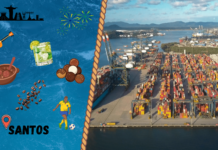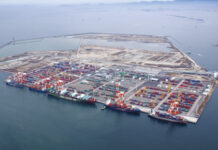
Amid the US-China trade war, Vietnam has benefited the most. As manufacturers shift some production from China to Vietnam, intra-Asia liner operators have been adding more calls to the Southeast Asian country.
US-China trade tensions have altered the flow of goods in Asia. According to China’s General Administration of Customs, the value of Chinese exports to South East Asia rose by nearly 60% year-on-year from January to October 2019, to US$412.7 billion, after the US levied a 10% tariff on Chinese exports a year ago. The value of Chinese exports to the US fell by 11%, to US$347.8 billion during the same period.
In response, liner operators are adding more calls to South East Asia, especially Vietnam, which has seen an influx of foreign investors who want to bypass US tariffs on Chinese exports. In December 2019, through a cooperation with Singapore’s Pacific International Lines (PIL), Taiwan’s Wan Hai Lines adjusted one of its Asia-US West Coast services, the China-Pacific Service I, to include Cai Mep Port, alongside Haiphong.
In January 2020, pan-Japanese carrier ONE launched Korea Haiphong Express (KHX), a new service connecting South Korea to northern Vietnam. The service adds to ONE’s existing Japan Vietnam Haiphong service that links Japan, South Korea and Taiwan to Haiphong.
KHX is the first within ONE’s network to call Incheon, providing shippers direct and fast coverage from North Vietnam to South Korea and South China to Incheon.
Drewry’s senior manager for container research Simon Heaney told Container News, “A combination of factors has seen shipping lines adding services to Vietnam, but the main driver is the US-China trade war.
“As US tariffs on Chinese imports have added to the costs of moving goods out of China, shippers have been looking for alternative manufacturing locations. If you look at how Vietnam-US trade, it has grown by 35% from a year ago, and Vietnam is now the fastest growing of the US’ trade partners.
“Vietnam is a good alternative as it has a highly educated workforce and its port infrastructure has been improved. Vietnam is also dependent on imports of raw materials so it needs more intermediate goods from within Asia. Liners follow the cargo flows so where the cargo is, they will have to provide the services.”
Martina Li
Asia Correspondent





